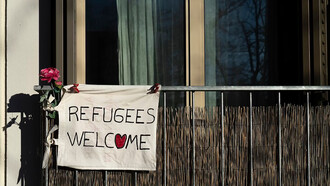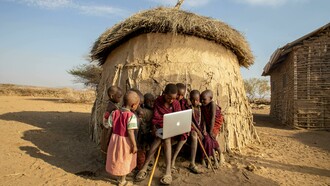No continent has provoked as many wars in the history of mankind as Europe. In the 20th century alone, it was responsible for the two world conflicts which, when added together, have resulted in the largest number of dead, wounded, crippled, disappeared, genocide and displaced persons in living memory. We must add, in the last decade of the last century, the Balkan wars in the former Yugoslavia and Kosovo that left around 150,000 victims. Already in the 21st century we can add the Donbass war, starting in 2014 between Ukraine and Russia, which supports Russian separatists and continues to this day, with around 14,000 dead and 25,000 wounded.
The winds of a major war are once again threatening the continent, where six of the ten largest arms-exporting countries in the world are located. Ranked in order of production and sales, the list is headed by the United States, followed by Russia, France, Germany, China, the United Kingdom, Spain, Israel, South Korea and Italy. Reviewing the SIPRI (Stockholm International Peace Research Institute) annual report of December 2020, we see that arms exports of the 25 largest producing companies in the world reached $361 billion dollars, which represented an increase of 8.5% compared to 2018. Out of the five countries concentrating 75% of sales in the world — the United States, Russia, France, Germany and China — three are European countries.
Peace in Europe has always been short-lived, as the history books remind us. The end of World War II generated great hopes for a new world order, but this did not happen. Instead, two new powers emerged: the United States and the Soviet Union. The Cold War quickly spread, and two military alliances were created: NATO (North Atlantic Treaty Organization) in 1949 and the Warsaw Pact in 1955. Europe continued to produce weapons, modernize its armies and the four decades of peace were broken by the disappearance of the Soviet Union in 1991, the socialist countries and the emergence of new states. The former Yugoslavia and later Kosovo were plunged into war before the eyes of the United Nations, NATO and the then European Economic Community (EEC).
The scenes of concentration camps, genocides, massacres, rapes, bombings, destruction of cities, ethnic cleansing and human displacements were repeated, as seen on television, under the impassive gaze of the blue helmets who were sent to protect the civilian population. The disappearance of the Warsaw Pact naively assumed that NATO would be dissolved, but this did not happen; on the contrary, it was strengthened with the entry of the new independent states that joined the military agreement as a means of protection against Russia. From 12 countries at the beginning, NATO now totals 30, with Ukraine, Georgia and Bosnia and Herzegovina on the waiting list, while neutrals such as Sweden and Finland participate in joint military maneuvers. Just as all the supreme commanders of the Warsaw Pact were Soviets — a clear message of who is in charge — the same has happened in NATO until today: all of them have been Americans, including the current one.
Today's tensions have arisen for several reasons, including NATO's extension eastwards, i.e. towards Russia, as well as Moscow's annexation of Crimea — which belonged to Ukraine — through the 2014 plebiscite, considered illegal. In 1954, the latter was ceded by Soviet leader Nikita Khrushchev to Kiev, but was always under Moscow's control. The peninsula has a long history of dominations having been part of the Roman Empire, and conquered numerous times until Catherine the Great, in 1783, defeated the Ottomans, incorporateding it into the Russian Empire. The annexation carried out in 2014 by President Vladimir Putin responded to historical and geopolitical interests (Sevastopol naval base on the Black Sea) and to the fact that 77% of the population has Russian as its mother tongue, 11% Tatar and only 10% Ukrainian, according to the 2001 census.
In Ukraine, 17.3% of the population is ethnically Russian and more than 40% of Ukrainians use that language as their mother tongue. An additional reason is the disputes over the Russian-German agreement to build the Nord Stream I and II gas pipelines crossing the Baltic Sea from Siberia to Germany. Number one has been in operation since 2011, while two was completed in September 2021, with a Russian investment of $11 billion dollars. To date, it has not been inaugurated due to existing tensions and pressure from Washington to Berlin. The United States has always opposed its construction, considering that it would generate dependence on Western Europe in a very sensitive area such as energy, where other Russian gas pipelines already cross the territory of Ukraine, supplying several Western countries and generating close to $2 billion dollars a year in favor of Kiev. Chancellor Angela Merkel's government approved the construction of Nord Stream II — despite the sanctions in force against Moscow — and the Russian state company Gazprom appointed former German Chancellor Gerhard Schröder as president of the project.
The Donbas region is the hot spot today in the dispute with Washington. The truth is that the war started there in 2014 and tensions have been maintained by the proclamation of independence of its two regions supported by Moscow, which currently maintains 100,000 soldiers on the border with that country. NATO, through the voice of its Secretary General, has warned that the risk of a war on the continent is "real" and that it would be a "strategic mistake" for Russia to attack Ukraine.
For his part, U.S. President Joe Biden has threatened Moscow, pointing out that any attack on Ukraine would have serious economic and "other" consequences. Diplomatic negotiations between representatives of the White House and the Kremlin continue in Geneva without encouraging results. Russia will not relent in its opposition to the accession of Georgia and Ukraine to NATO, pointing out that it cannot accept Western military bases reaching its borders. In the Donbas region, almost 40% of its inhabitants are Russians, according to the aforementioned census. If Russia attacks Ukraine, harsh economic and financial measures agreed by Washington and its European Union partners will come into force. Moscow has indicated that it has no intention of attacking, but the military maneuvers are very intimidating. They are surely counting on the fact that a confrontation would immediately break the fragile unity of the countries, where the majority of the population does not believe in military solutions and are not willing to see their soldiers go to die in the far East of Europe.
On the Russian side, the nationalist discourse is widely supported by its population, which claims its imperial history. Putin expressed it clearly: "the disappearance of the Soviet Union represented the greatest geopolitical catastrophe of the 20th century." Historical experience proves Russia's neighbors right in fearing an eventual invasion by Moscow. Countries that are not members of the European Union know that the path to membership necessarily involves joining NATO. Russia recalled that in 1962, when Moscow tried to install missiles 90 miles from the United States (in Cuba) it opposed and planted its ships to prevent the passage, leaving the world on tenterhooks, in fear of a war between the two powers.
When military skirmishes or an invasion of territory begins, no one can know how it will end. Europe had a 46-year period of peace until the Balkan war that lasted 10 years and involved NATO, who for two and a half months bombed Belgrade in 1999, leaving between 1,200 and 5,000 dead (depending on the sources). Today, peace is again in danger while arms producers smile at the increase in sales.
Russia is clear about its power and conventional military superiority in Europe. In addition, it supplies the western part with gas. The United Nations and the European Union become secondary actors in this plot where the United States and Russia are the main ones. In a war, as always, the most affected will be the civilians who die in the bombings, will see their homes destroyed so that, finally, the politicians end up reaching an agreement and shaking hands in front of the cameras.















